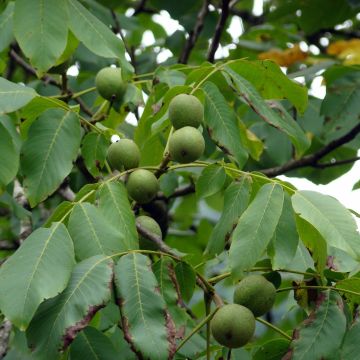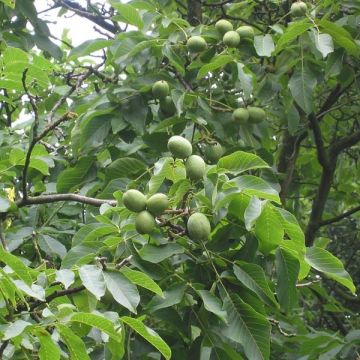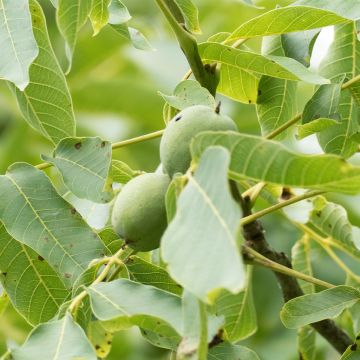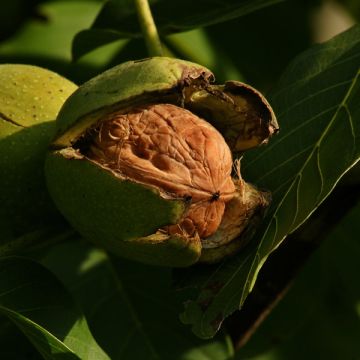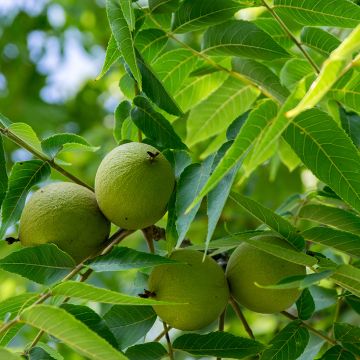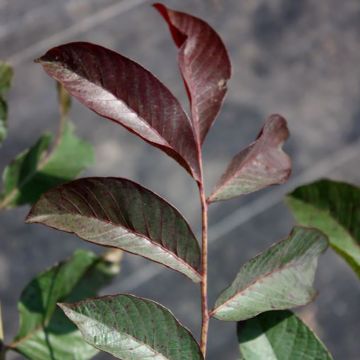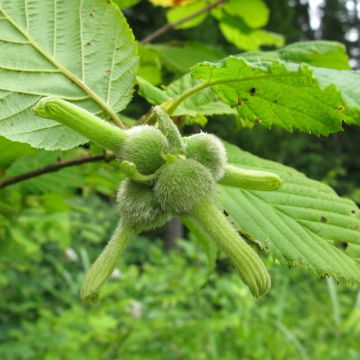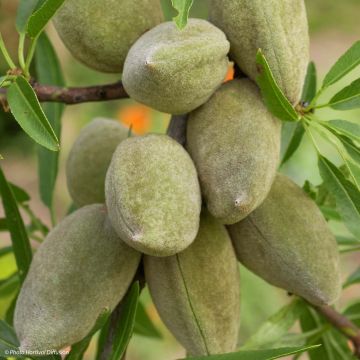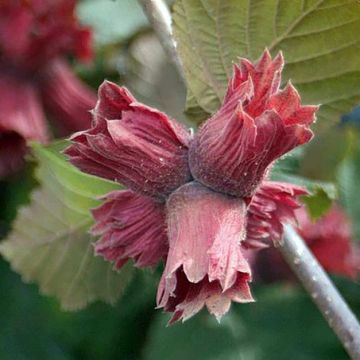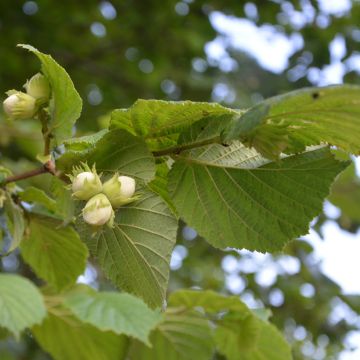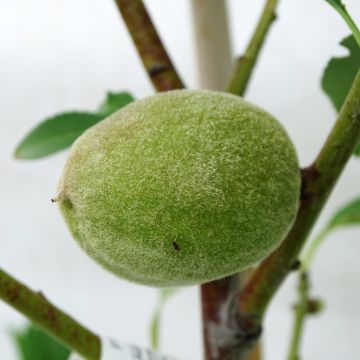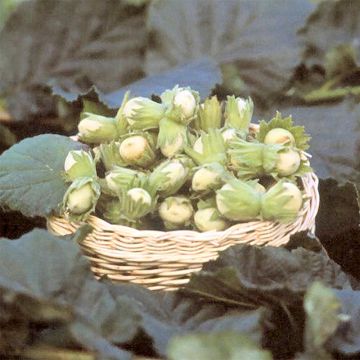Shipping country and language
Your country of residence may be:
Your country of residence is:
For a better user experience on our website, you can select:
Your shipping country:
-
Andorra
-
Austria
-
Belgium
-
Bulgaria
-
Canada
-
Chile
-
Croatia
-
Cyprus
-
Czechia
-
Denmark
-
Estonia
-
Finland
-
France
-
Germany
-
Greece
-
Hungary
-
Iceland
-
Ireland
-
Italy
-
Latvia
-
Lithuania
-
Luxembourg
-
Malta
-
Monaco
-
Netherlands
-
Poland
-
Portugal
-
Romania
-
Slovakia
-
Slovenia
-
Spain
-
Sweden
-
Switzerland
-
United Kingdom
We only deliver seed and bulb products to your country. If you add other products to your basket, they cannot be shipped.
Language:
-
French
-
German
-
Spanish
-
English
-
Italian
My Account
Hello
My wish lists
Log in / Register
Existing customer?
New customer?
Create an account to track your orders, access our customer service and, if you wish, make the most of our upcoming offers.


Juglans regia Chandler - Juglans regia
Juglans regia Chandler - Juglans regia
Juglans regia Chandler
Common Walnut, Persian Walnut, English Walnut
Order in the next for dispatch today!
Dispatch by letter from 3,90 €.
Delivery charge from 5,90 € Oversize package delivery charge from 6,90 €.
More information
This item is not available in your country.
Shipping country:
-
Andorra
-
Austria
-
Belgium
-
Bulgaria
-
Canada
-
Chile
-
Croatia
-
Cyprus
-
Czechia
-
Denmark
-
Estonia
-
Finland
-
France
-
Germany
-
Greece
-
Hungary
-
Iceland
-
Ireland
-
Italy
-
Latvia
-
Lithuania
-
Luxembourg
-
Malta
-
Monaco
-
Netherlands
-
Poland
-
Portugal
-
Romania
-
Slovakia
-
Slovenia
-
Spain
-
Sweden
-
Switzerland
-
United Kingdom
Schedule delivery date,
and select date in basket
This plant carries a 6 months recovery warranty
More information
We guarantee the quality of our plants for a full growing cycle, and will replace at our expense any plant that fails to recover under normal climatic and planting conditions.
Oversize package: home delivery by special carrier from 6,90 € per order..
Express home delivery from 8,90 €.
Description
Juglans regia Chandler is a very productive variety of common walnut with medium to low vigour which bears fruit partly on lateral twigs and at the end of one-year-old branches. The tree produces from the age of 4-5 years. Its large-sized (34 to 36 mm (1in)), oblong walnuts contain kernels of very high quality, with excellent taste. Partially self-fertile variety.
Juglans regia or common walnut is part of the Juglandaceae family, it is a deciduous tree native to China, Iran and Southeast Europe. The Chandler variety was selected in California. It is a semi-erect tree that reaches about 7.50 metres (25 feet) high in 20 years and can reach up to 12 metres (39 feet) at maturity. Its spread is slightly less imposing, it can reach up to 10 metres (33 feet). In orchards, leave 8 metres (26 feet) between two trees. No planting is possible below its canopy as few plants can withstand its competition due to the production of juglone, an aromatic compound toxic to most plants.
Budding in this Chandler variety is quite early, buds open at the beginning of April. Insignificant flowers appear between April 15 and May 8, on lateral twigs and at the end of one-year-old branches. It is described as protandrous, meaning that male flowers mature slightly before female flowers. This explains the need to plant another walnut tree with slightly staggered flowering to ensure optimal pollination. Choose Ronde de Montignac, Franquette or Fernette for example. The walnut of the 'Chandler' variety is ready to harvest in October. The fruit is covered with a thick green skin that stains the fingers when broken. The shell can measure up to 362 mm (14in) in length. It is quite thin, with two firmly fused valves. The kernels represent up to 50% of the weight of the walnut and are very light in colour and easily detachable. They are extremely tasty fresh or dried. The foliage of the walnut turns yellow in autumn before falling.
To store your walnuts: remove them from their skin (wear gloves, as it strongly stains the fingers). First, let them dry in one or two layers in crates, in a dry place, turning them occasionally, for 4 to 5 weeks. Then store your walnuts in a dark place, at a temperature between 7 and 10°C (44.6 and 50°F), in a not too humid room (70% humidity).
In cooking: you can enjoy walnut kernels in savoury salads (endive salad, with cheese, dried duck breasts...) or sweet salads (with winter fruits and raisins), or in pastries. There are many recipes to discover, based on walnuts. Green walnuts can also be harvested in June for the production of walnut wine.
Walnut trees in general prefer moist and deep, well-drained soils as they dislike stagnant humidity. Once well-rooted in deep soil, they tolerate summer drought quite well. A harsh winter can limit fruiting and weaken the tree.
Report an error about the product description
Juglans regia Chandler - Juglans regia in pictures


Plant habit
Fruit
Flowering
Foliage
Botanical data
Juglans
regia
Chandler
Juglandaceae
Common Walnut, Persian Walnut, English Walnut
Cultivar or hybrid
Other Walnut trees
Planting and care
Plant your Chandler walnut in a sunny and open location, in deep soil. It tolerates limestone and clay but prefers loose soils to extend its roots. Create a planting hole enriched with humus and gravel. Take care to water your walnut tree during periods of drought in the first few years. You can add well-decomposed compost to its base in autumn. During the first 5 years, encourage the formation of 3 or 4 main branches to give it a goblet shape, which is traditional in fruit tree cultivation. Harvest takes place in October, and the fruit is as good fresh as it is dried. To dry your walnuts, place them in a well-ventilated area, spread out to limit the risk of mould. Harvest quickly, as soon as the fruits start falling to the ground. The walnuts should not stay on the ground for more than three days.
Planting period
Intended location
Care
This item has not been reviewed yet - be the first to leave a review about it.
Shell fruit
Haven't found what you were looking for?
Hardiness is the lowest winter temperature a plant can endure without suffering serious damage or even dying. However, hardiness is affected by location (a sheltered area, such as a patio), protection (winter cover) and soil type (hardiness is improved by well-drained soil).

Photo Sharing Terms & Conditions
In order to encourage gardeners to interact and share their experiences, Promesse de fleurs offers various media enabling content to be uploaded onto its Site - in particular via the ‘Photo sharing’ module.
The User agrees to refrain from:
- Posting any content that is illegal, prejudicial, insulting, racist, inciteful to hatred, revisionist, contrary to public decency, that infringes on privacy or on the privacy rights of third parties, in particular the publicity rights of persons and goods, intellectual property rights, or the right to privacy.
- Submitting content on behalf of a third party;
- Impersonate the identity of a third party and/or publish any personal information about a third party;
In general, the User undertakes to refrain from any unethical behaviour.
All Content (in particular text, comments, files, images, photos, videos, creative works, etc.), which may be subject to property or intellectual property rights, image or other private rights, shall remain the property of the User, subject to the limited rights granted by the terms of the licence granted by Promesse de fleurs as stated below. Users are at liberty to publish or not to publish such Content on the Site, notably via the ‘Photo Sharing’ facility, and accept that this Content shall be made public and freely accessible, notably on the Internet.
Users further acknowledge, undertake to have ,and guarantee that they hold all necessary rights and permissions to publish such material on the Site, in particular with regard to the legislation in force pertaining to any privacy, property, intellectual property, image, or contractual rights, or rights of any other nature. By publishing such Content on the Site, Users acknowledge accepting full liability as publishers of the Content within the meaning of the law, and grant Promesse de fleurs, free of charge, an inclusive, worldwide licence for the said Content for the entire duration of its publication, including all reproduction, representation, up/downloading, displaying, performing, transmission, and storage rights.
Users also grant permission for their name to be linked to the Content and accept that this link may not always be made available.
By engaging in posting material, Users consent to their Content becoming automatically accessible on the Internet, in particular on other sites and/or blogs and/or web pages of the Promesse de fleurs site, including in particular social pages and the Promesse de fleurs catalogue.
Users may secure the removal of entrusted content free of charge by issuing a simple request via our contact form.
The flowering period indicated on our website applies to countries and regions located in USDA zone 8 (France, the United Kingdom, Ireland, the Netherlands, etc.)
It will vary according to where you live:
- In zones 9 to 10 (Italy, Spain, Greece, etc.), flowering will occur about 2 to 4 weeks earlier.
- In zones 6 to 7 (Germany, Poland, Slovenia, and lower mountainous regions), flowering will be delayed by 2 to 3 weeks.
- In zone 5 (Central Europe, Scandinavia), blooming will be delayed by 3 to 5 weeks.
In temperate climates, pruning of spring-flowering shrubs (forsythia, spireas, etc.) should be done just after flowering.
Pruning of summer-flowering shrubs (Indian Lilac, Perovskia, etc.) can be done in winter or spring.
In cold regions as well as with frost-sensitive plants, avoid pruning too early when severe frosts may still occur.
The planting period indicated on our website applies to countries and regions located in USDA zone 8 (France, United Kingdom, Ireland, Netherlands).
It will vary according to where you live:
- In Mediterranean zones (Marseille, Madrid, Milan, etc.), autumn and winter are the best planting periods.
- In continental zones (Strasbourg, Munich, Vienna, etc.), delay planting by 2 to 3 weeks in spring and bring it forward by 2 to 4 weeks in autumn.
- In mountainous regions (the Alps, Pyrenees, Carpathians, etc.), it is best to plant in late spring (May-June) or late summer (August-September).
The harvesting period indicated on our website applies to countries and regions in USDA zone 8 (France, England, Ireland, the Netherlands).
In colder areas (Scandinavia, Poland, Austria...) fruit and vegetable harvests are likely to be delayed by 3-4 weeks.
In warmer areas (Italy, Spain, Greece, etc.), harvesting will probably take place earlier, depending on weather conditions.
The sowing periods indicated on our website apply to countries and regions within USDA Zone 8 (France, UK, Ireland, Netherlands).
In colder areas (Scandinavia, Poland, Austria...), delay any outdoor sowing by 3-4 weeks, or sow under glass.
In warmer climes (Italy, Spain, Greece, etc.), bring outdoor sowing forward by a few weeks.

